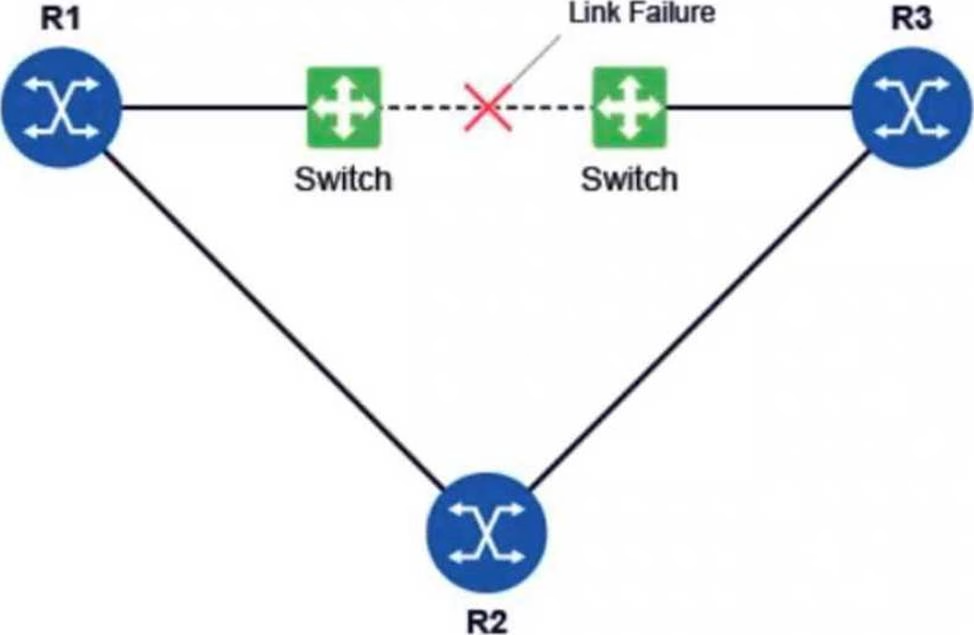After the link failure, which of the following affects the routing protocol’s convergence time?
Refer to the exhibit.

All routers in the diagram are running a link-state routing protocol. Before the link failure, all routers have operational adjacencies with each other and there is a BFD session between routers R1 and R3.
After the link failure, which of the following affects the routing protocol’s convergence time?
A . The value of the Ethernet hello timers on the switches.
B . The value of the routing protocol hello timers on routers R1 and R3.
C . The value of the BFD transmit interval, receive interval and multiplier settings on routers R1 and R3.
D . The time taken by the switches to detect that the physical ports are down.
Answer: C
Explanation:
BFD (Bidirectional Forwarding Detection) is used to detect link failures quickly and helps improve convergence time in link-state routing protocols. The BFD session between routers R1 and R3 allows them to detect the failure of the link between them more quickly than the regular routing protocol hello timers. The transmit interval, receive interval, and multiplier settings determine how fast BFD detects a failure and triggers the routing protocol to converge, which directly impacts the convergence time.
Latest 4A0-112 Dumps Valid Version with 40 Q&As
Latest And Valid Q&A | Instant Download | Once Fail, Full Refund

